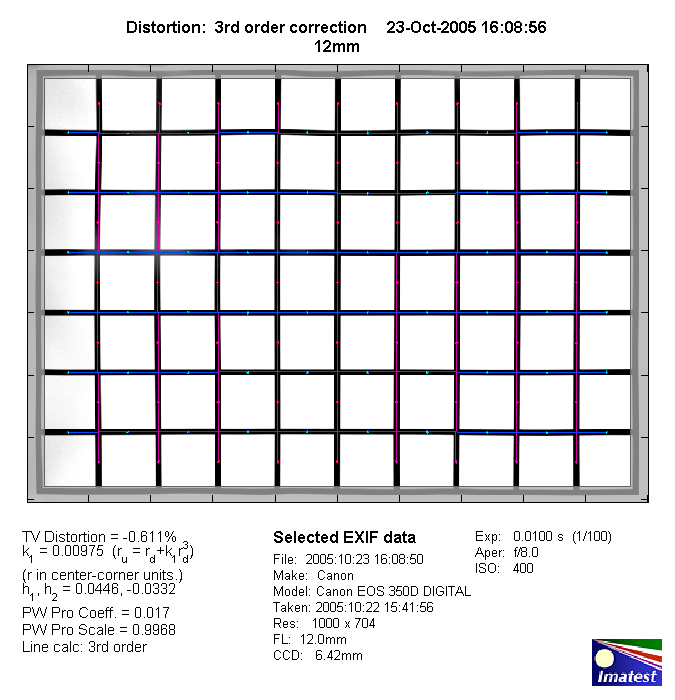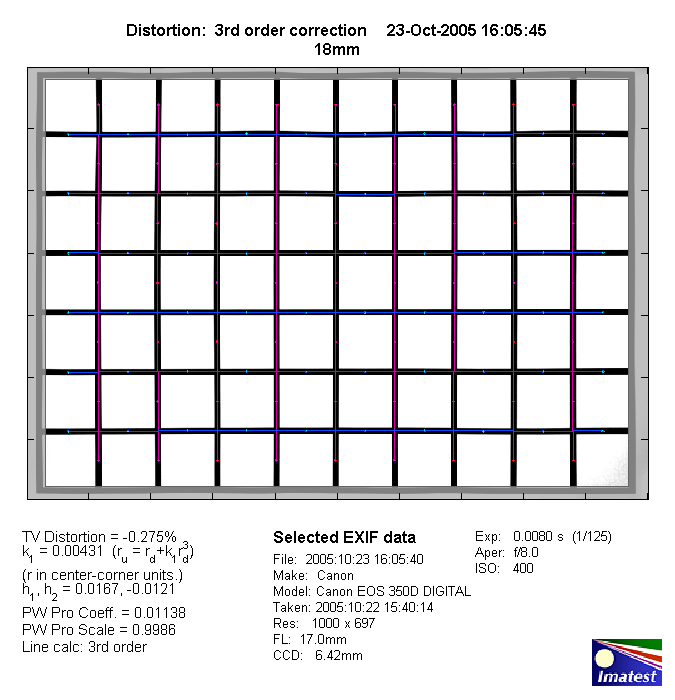|
Sigma AF 12-24mm f/4.5-5.6 EX DG HSM - Review / Test Report - Analysis |
|
Lens Reviews -
Canon EOS (APS-C)
|
|
Page 2 of 3
Distortion
The Sigma AF 12-24mm EX showed an exemplary performance regarding distortion with
only slight (12mm) to marginal (24mm) barrel distortion. The remaining distortion
has a slightly wavy characteristic but this remains truly baffling for an ultra-wide
zoom lens.
12mm:

18mm:

24mm:

The chart above has a real-world size of about 120x80cm or 40x the focal length.
Expect more distortion towards closer focus distances.
Vignetting
Typical for many ultra-wide zooms the Sigma also suffers from vignetting problems
which are most pronounced at the 12mm setting where they exceed 1EV so even the
APS-C crop factor doesn't help here. Stopping down to f/5.6 and beyond helps
to control the issue. At 18mm and 24mm vignetting is no significant problem
anymore.

MTF (resolution)
The lens produced a good to very-good performance in the lab.
As to be expected the resolution figures are worst at 12mm - less so in
the center but the borders are somewhat soft. The performance increases
steadily till f/11 to a very good center and good borders.
It is worth to mention that the lens suffered from rather extreme field
curvature here - an effect which isn't really compatible to (flat) test
charts. It was necessary to choose a much longer focus distance (compared
to the real life distance) in order to achieve acceptable corner results
(displayed in the graphs below).
This effect is usually not overly field relevant because it is hidden by
the depth-of-field which is rather pronounced with such an ultra-wide lens
anyway. At 18mm and 24mm the Sigma proved to be a very solid performer with a very
high center performance and just slightly worse corners.
The chart has been revised due to an incorrect reading at 12mm.
Please note that the MTF results are not directly comparable across the different systems!
Below is a simplified summary of the formal findings. The chart shows line widths per picture height (LW/PH) which can be taken as a measure for sharpness.
If you want to know more about the MTF50 figures you may check out the corresponding Imatest Explanations
Chromatic Aberrations (CAs)
Chromatic aberrations (color shadows at harsh contrast transitions) can be a problem with this
lens. In fact the Imatest tool refused to analyze the CAs at the worst image corner (12mm, lower right)
where the problem probably exceeded 3 (!) pixels on the average - I had to obtain the CA figures
from a slightly different place here in order to keep Imatest from stalling. The CA characteristic
was also slightly uneven in this specific lens sample because at the upper right the average CA pixel
width was just ~1 pixel (at 12mm). The chart below shows the averaged value of these image portions.
At the 18mm setting the problem remains very pronounced, less so at 24mm.
Usually CAs can be corrected via imaging tools but this is only possible if the problem is
symmetrical which was not the case here.

|